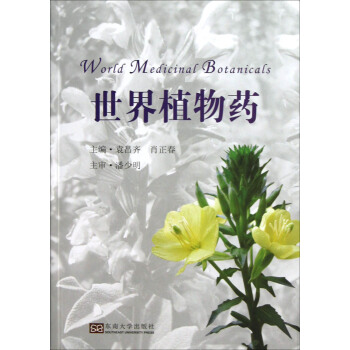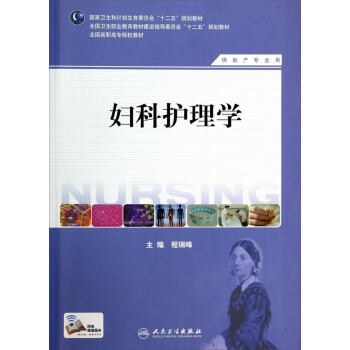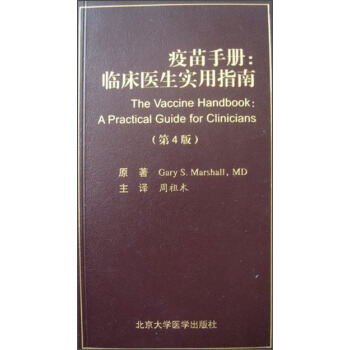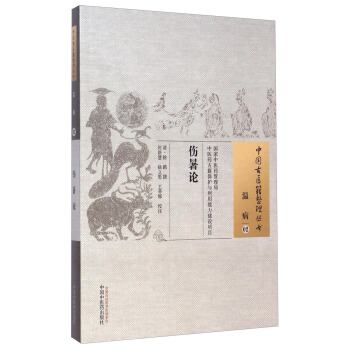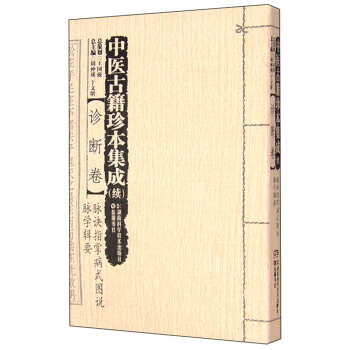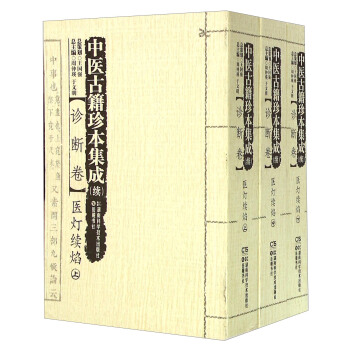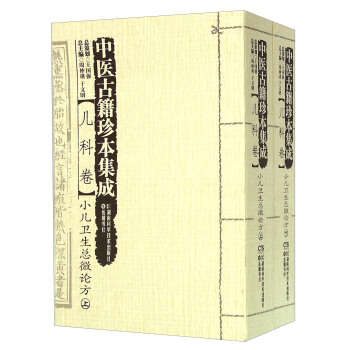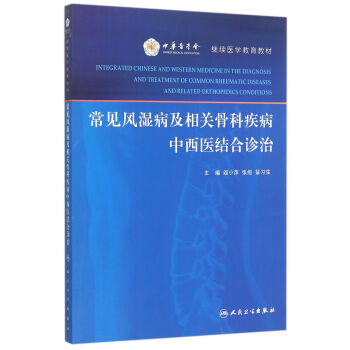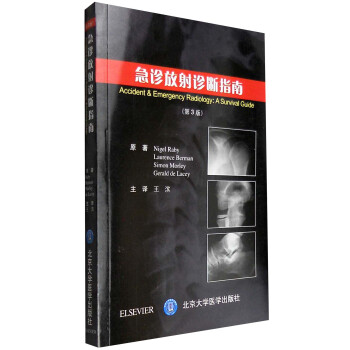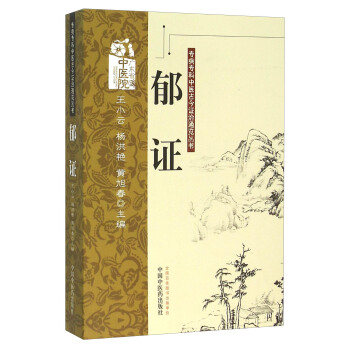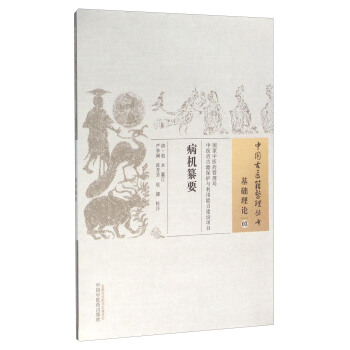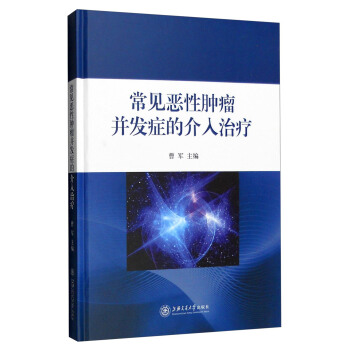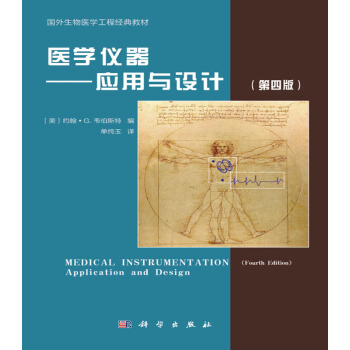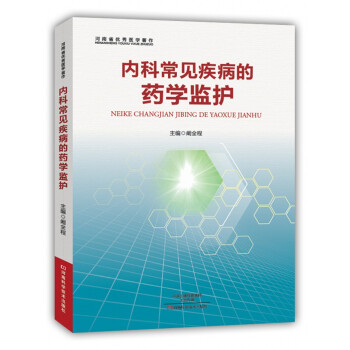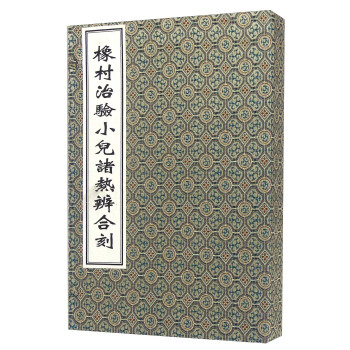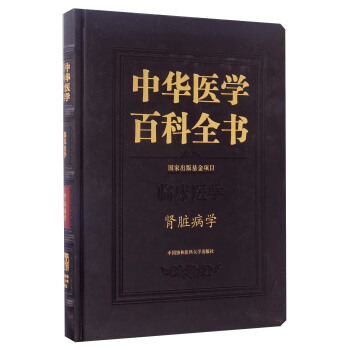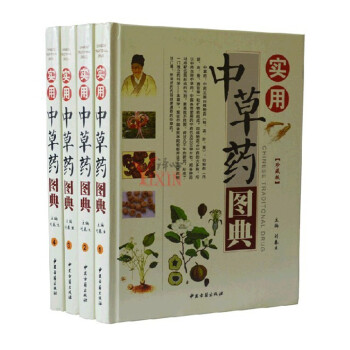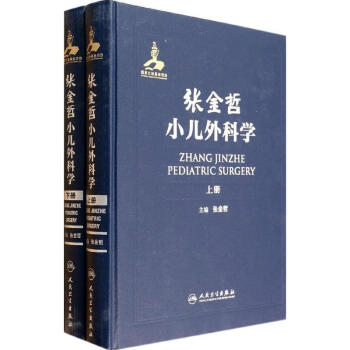

具体描述
内容简介
Professor Xie Zhufan is a leading specialist in the area ofintegrating Chinese and Western medicine, Taking heed of theculturl differenices of the East and the West, he has writtenPractical Traditiona/ Chinese Medicine to meet the needs ofWestern doctors who do not have the knowledge of Chinese butexplaining profound concepts in simple terms. It covers basictheories and major therapeutic measures, i.e., herbalmedication and acupuncture. The diseases discussed aremainly those, for which Western medical treatment is eitherhardly effective or likely to produce serious side effects whileChinese medicine may gain better results. The therapeuticmethods have been carefully selected; they are quite practicaland easy to apply, indicating the characteristic features oftraditional Chinese medicine: simplicity and effectiveness. Thebook not only includes the basic knowledge of traditionalChinese medicine, but also the fruits of Pro~essor Xie's ownexperience and understanding.作者简介
谢竹藩,北京大学第一临床学院教授,北京大学中西医结合研究所名誉所长。四十多年来,他一直致力于中西医结合临床及实验研究,在传统中医学和中西医结合医学上有深厚造诣和突出成就。他多次应邀在国外医学院讲学,并多次出任世界卫生组织传统医学顾问,曾参与世界卫生组织“标准针炙命名法”的定稿工作。同时,他还出版了大量的研究专著,如1980年的《汉英常用中医药词汇》和1984年的《中医药词典》二书,在国内外产生了较大影响。他因在《汉英医学大词典》(1987年)一书的编篡中有突出贡献,而获得卫生部嘉奖。此外,还与人合作编著出版了1994年版的《汉英中医药分类词典》。2000年,他受命于国家中医药管理局,进行“中医药名词术语英译标准化”的研究。本词典就是在该项研究的基础上重新编著而成。内页插图
目录
PREFACEFOREWORD
PART ONE
THE FUNDAMENTALS AND PRINCIPLES OF TRADITIONAL
CHINESE MEDICINE
CHAPTER 1
PFILLOSOPHICAL BASIS OF TRADITIONAL CHINESE MEDICINE-Theories ofEssential Qi, Yin-Yang and the Five Elements
CHAPTER 2
THE FUNDAMENTAL SUBSTANCES FOR LIFE ACTIVITIES-Vital Essence, Q, Fluids, and Blood
CHAPTER 3
STRUCTURE AND FUNCTIONS OF THE HUMAN BODY-Manifestations ofthe Zang-Fu Organs
CHAPTER 4
CAUSES OF DISEASE AND PATHOGENIC FACTORS
CHAPTER 5
METHODS OF EXAMINATION
CHAPTER 6
DIFFERENTIATION OF SYNDROMES
CHAPTER 7
PRINCIPLES AND METHODS OF TREATMENT
PART TWO
TRADITIONAL CHINESE DRUGS
CHAPTER 8
FUNDAMENTAL KNOWLEDGE OF CHINESE DRUGS
CHAPTER 9
MATERIA MEDICA IN COMMON USE
CHAPTER 10
HERBAL FORMULAS
CHAPTER 11
COMMONLY USED PATENT MEDICINES
PART THREE
ACUPUNCTURE AND MOXIBUSTION
CHAPTER 12
THE MERIDIAN SYSTEM
CHAPTER 13
ACUPOINTS
CHAPTER 14
TECHNIQUES OF ACUPUNCTURE AND MOXIBUSTION
CHAPTER 15
BASIC PRINCIPLES OF ACUPUNCTURE TREATMENT
PART FOUR
COMMON DISEASES
CHAPTER 16
RESPIRATORY DISEASES
CHAPTER 17
CARDIOVASCULAR DISEASES
CHAPTER 18
DIGESTIVE DISEASES
CHAPTER 19
BLOOD DISORDERS
CHAPTER 20
RENAL DISEASES
CHAPTER 21
ENDOCRINE AND METABOLIC DISORDERS
CHAPTER 22
GYNECOLOGICAL DISEASES
CHAPTER 23
SKIN DISEASES
CHAPTER 24
NEUROLOGICAL AND PSYCHIATRIC DISORDERS
CHAPTER 25
LOCOMOTIVE DISORDERS
APPENDIX 1
APPENDIX 2
INDICES
GENERAL INDEX
INDEX OF PINYIN NAMES OF MEDICINAL SUBSTANCES, HERBAL
FORMULAS, PATENT MEDICINES AND ACUPOINTS
INDEX OF LATIN NAMES OF MEDICINAL SUBSTANCES
ACKNOWLEDGEMENT
精彩书摘
The Lungs dominate qi in two aspects. One aspect is that the Lungs take charge ofrespiration; breathing in fresh qi (air containing oxygen) and breathing out stale qi (aircontaining carbon dioxide). It is in the Lungs that the gas exchange takes place. Therefore,the movements of q/in the Lungs include ascending, descending, coming in and going out.Through these movements of qi in different directions, the Lungs regulate the movementsof qi in general. In the process of respiration, the air passages should be kept clean andunobstructed. If any pathogenic factor impedes the smooth flow of air during respiration,there will be coughing and dyspnea due to "upward perversion of Lung q" It should berespiratory disorders, such as coughing and dyspnea in emphysema and chronic asthma,are often attributed to impaired function ofboth the Lungs and the Kidneys.The other aspect is the role ofthe Lungs in the formation ofq, especially pectoral q.Pectoral qi is formed by combining essential qi derived from food and fresh air (oxygen)inhaled by the Lungs. The qi thus formed in the Lungs is collected in the chest. It providesenergy for respiration and the voice on the one hand, and assists Heart qi to promote bloodcirculation on the other. With normal functioning of the Lungs in dominating q, abundantqi can be supplied to all the zangfu organs, Impairment of this function usually results in insufficient formation of pectoral qi and disordered movements of q/in general, manifestedby shortness ofbreath, feeble voice, lassitude and lack of energy.
2. Regulating the water passages
This is one of the unique points in traditional Chinese medicine. The Lungs arebelieved to take part in the regulation of water metabolism. They disseminate fluid to thebody's surface, and disperse a part of the body's fluids through the pores as sweat. They also constantly send fluid downwards to the Kidneys for the excretion of urine. The latter function is known as "regulating the water passages." Ifthis function is impaired, fluid willbe retained, transformed into phlegm in the Lungs, or accumulated in the tissues, resultingin edema, especially edema ofthe upper portion ofthe body.
The Lungs' function in regulating the water passages is a conclusion drawn fromclinical observations. Edema manifested in the upper portion of the body (e.g., acutenephritis) is often associated with respiratory symptoms and can be relieved with herbalmedicines commonly used for treating respiratory diseases (such as Herba Ephedrae).
......
前言/序言
用户评价
这本书简直是打开了新世界的大门!作为一名对中医一直充满好奇但又不得其法的初学者,我常常在浩如烟海的中医典籍前望而却步,那些古老的词汇和复杂的理论,总让我感到无从下手。然而,《实用中医学(英文版)》的出现,就像在黑暗中点亮了一盏明灯。它并非简单地堆砌知识,而是以一种极其精妙的方式,将中医那深邃而又庞大的体系,分解成一个个易于理解的模块。 我尤其喜欢它在介绍基础理论时所采用的类比和图示。例如,在讲解“气”、“血”、“津液”等概念时,作者并没有仅仅罗列定义,而是通过与现代生理学和日常生活经验相联系的生动比喻,让我一下子就豁然开朗。就像是在描述一个精密运转的身体机器,每一个零件(脏腑)都有其独特的功能,而“气”、“血”、“津液”则是驱动这台机器不可或缺的能量和润滑剂。这种“接地气”的讲解方式,极大地降低了学习门槛,让我不再因为术语的陌生而感到焦虑。 而且,这本书的结构设计也十分巧妙。它循序渐进,从最基本的中医思维方式,到脏腑理论、经络学说,再到病因病机、诊断方法,最后触及到具体的治法和方剂,每一步都走得稳健而扎实。即使是那些我之前认为非常抽象的概念,在这本书里也变得鲜活起来。它鼓励读者去思考,去联想,去将理论与实际相结合,而不是死记硬背。我感觉自己不再是被动地接收信息,而是真正地参与到中医知识的学习和建构过程中。 最令人惊喜的是,这本书在英文世界的传播,让更多不同文化背景的人有机会接触到中医的智慧。我常常和同样热爱中医的外国朋友交流,发现大家在阅读这本书时,都有着相似的惊叹和收获。它打破了语言的壁垒,让中医的博大精深得以更广泛地传播。我个人而言,这本书不仅提升了我对中医理论的理解,更激发了我进一步深入探索中医世界的决心。它让我看到了中医的科学性和实用性,以及它在维护人类健康方面所能发挥的巨大作用。 我强烈推荐给所有对中医感兴趣的朋友,无论你是零基础的初学者,还是已经有一些中医知识但希望系统梳理的爱好者,这本书都将是你不可多得的宝藏。它不仅仅是一本教科书,更像是一位耐心而又智慧的向导,引领你穿越中医的迷雾,感受它独特的魅力。这本书的出版,无疑是中医国际化进程中的一大步,也为我们这些热爱中医的读者带来了福音。我迫不及待地想把它推荐给更多人,让他们也一起踏上这段奇妙的中医探索之旅。
评分从一个完全的门外汉的角度,我必须说《实用中医学(英文版)》这本书真的颠覆了我对中医的刻板印象。一直以来,我总觉得中医是那种充满神秘色彩、难以捉摸的东西,那些“望闻问切”、“阴阳五行”之类的词汇,听起来就像古代的巫术,离我的日常生活很遥远。然而,这本书以一种非常务实和现代化的视角,将中医的精髓一点点地展现在我面前,让我看到了它背后蕴含的深邃智慧和科学性。 我尤其欣赏书中对中医诊断方法的细致讲解。它不仅仅是告诉我们中医如何“看病”,更是详细解析了每一种诊断方法背后的原理和意义。比如,关于“望诊”,它不仅仅是观察病人的面色、舌苔,更重要的是解释了这些表面现象背后所反映出的身体内部变化。通过大量的图文并茂的示例,我能够清晰地看到,一个细微的面色变化,可能就代表着身体某个脏腑出现了问题。这种深入浅出的讲解,让我对中医的诊断能力有了全新的认识。 而且,这本书在介绍中医的治疗方法时,也做得非常到位。它并没有回避那些可能让西方医学难以理解的方面,而是通过科学的解释和大量的临床案例,来论证中医治疗的有效性。无论是针灸、推波助 갈(这里我假设您指的是推拿,如果不是,请告知),还是中药方剂,书中都给予了详细的阐述,并且解释了它们是如何作用于人体,达到治疗目的的。这种严谨的态度,让我对中医的信任度大大提高。 这本书的另一个亮点在于其对中医“未病先防”理念的强调。在现代社会,人们越来越关注健康管理和疾病预防,而中医在这方面恰恰拥有得天独厚的优势。《实用中医学(英文版)》很好地阐释了如何通过调整生活方式、饮食习惯以及运用中医的养生方法,来保持身体的健康,预防疾病的发生。这一点对于我这样关注生活品质的人来说,非常有吸引力。 总的来说,《实用中医学(英文版)》是一本真正能让普通人理解和接受中医的优秀读物。它成功地将中医这座古老而神秘的宝库,以一种现代化的、易于理解的方式展现在我们面前。我强烈推荐给所有对中医感兴趣,但又担心其复杂难懂的朋友们,相信你们也一定会和我一样,在这本书中收获良多,并对中医产生全新的认识和喜爱。
评分我必须坦诚地说,在接触《实用中医学(英文版)》之前,我对中医的认知几乎为零,甚至带有一些固有的偏见。总觉得它不够“科学”,太玄乎,难以捉摸。然而,这本书彻底改变了我的看法,它就像一位循循善诱的老师,用一种完全不同的视角,让我重新认识了中医。这本书的伟大之处在于,它并没有试图用艰深的术语来“吓退”读者,而是用一种非常平实、逻辑清晰的方式,层层递进地展现了中医的博大精深。 最令我折服的是,书中对中医“辨证论治”理念的解读。我一直以为中医就是根据症状给药,殊不知“辨证”才是关键。这本书详细解释了如何通过“望、闻、问、切”这四诊来收集信息,然后如何根据“阴阳、虚实、寒热、表里”等八纲辨证,来分析病机的本质。这种严谨的推理过程,让我看到了中医的科学性和逻辑性,它并非是随意的臆测,而是基于对人体深刻的理解。 而且,书中对脏腑理论的讲解也让我耳目一新。我之前以为“肝”“心”“脾”“肺”“肾”仅仅是西医解剖学上的器官,而这本书却告诉我,中医的“脏腑”更多的是一种功能概念,它们之间有着复杂的联系,并且与情志、饮食、起居等生活习惯息息相关。通过生动的比喻和大量的临床案例,我能够理解这些“脏腑”是如何影响我们的身心健康,以及如何通过调理它们来达到治病养生的目的。 这本书还非常注重中医的“治未病”思想。它不仅仅教你如何治病,更重要的是教你如何通过调整生活方式、饮食起居以及运用一些简单的中医养生方法,来保持身体的健康,预防疾病的发生。这一点对于我这种越来越关注健康生活方式的人来说,非常有价值。它让我明白,中医不仅仅是一种治疗疾病的手段,更是一种积极健康的生活哲学。 总而言之,《实用中医学(英文版)》是一本真正意义上的“实用”中医教材。它不仅仅是一本知识的集合,更是一种思维方式的启迪。它用一种非常接地气的方式,将中医这门古老而又充满智慧的学问,呈现在世界面前。我由衷地感谢这本书,它让我对中医有了全新的认识,也激发了我进一步学习和探索中医的热情。我强烈推荐给所有对中医感兴趣的朋友,相信你们也会和我一样,在这本书中找到惊喜和收获。
评分这本书最大的价值在于其对中医理论的系统化梳理和现代化解读,它成功地架起了中西方医学沟通的桥梁。作为一名对西方医学有一定的了解,但对中医一直处于模糊状态的学习者,我常常在尝试阅读中文中医经典时感到力不从心,那些独特的概念和逻辑体系,总让我难以理解。而《实用中医学(英文版)》则以一种更加普适和易于接受的方式,为我打开了中医的大门。 书中对中医核心概念的解释,尤其令人赞叹。它并没有回避那些看似抽象的概念,而是通过清晰的类比和逻辑链条,将它们与我们熟悉的生理和病理过程联系起来。例如,在讲解“五脏六腑”的生理功能时,它不仅仅是描述每个脏器的功能,更重要的是阐述了它们之间是如何相互配合、相互制约,共同维持人体正常的生理活动。这种“系统性”的阐述,让我能够从整体上把握中医的理论体系,而不是碎片化地记忆。 而且,这本书在介绍中医的诊断和治疗方法时,也展现出了其严谨和科学的态度。它并没有简单地罗列各种方法,而是深入分析了每一种方法背后的原理,以及它们是如何作用于人体的。例如,在讲解针灸时,它不仅介绍了穴位的位置,更重要的是解释了针灸是如何通过刺激特定的穴位,来调节人体的气血运行,从而达到治疗目的的。这种“知其然,更知其所以然”的讲解方式,极大地增强了我对中医的信心。 让我印象深刻的是,这本书在介绍中医的治病理念时,也强调了其“整体观”和“个体化”的特点。它鼓励读者从整体上分析病情,考虑人体的各个方面,并根据每个人的具体情况来制定个性化的治疗方案。这与现代医学强调的“精准医疗”有着异曲同工之妙,也让我看到了中医在未来医学发展中的巨大潜力。 总而言之,《实用中医学(英文版)》是一本不可多得的优秀中医入门读物。它用一种更加科学、系统和易于理解的方式,将中医的精髓展现在我们面前,让我们能够更深入地理解和欣赏这门古老而又充满活力的医学体系。我强烈推荐给所有对中医感兴趣的朋友,无论你是初学者还是有一定基础的学习者,这本书都将为你带来深刻的启发和收获。
评分这本书的精髓在于它将中医那原本复杂深奥的理论,用一种前所未有的清晰和系统化的方式呈现给了读者。我一直觉得中医是一种非常注重整体性和个体化的医学体系,但如何将其系统地理解和应用,却常常是个难题。然而,《实用中医学(英文版)》在这方面做得非常出色。它不仅仅罗列了中医的各种概念,更重要的是,它阐述了这些概念是如何相互关联、相互作用,最终构成一个完整的医学理论框架。 例如,在讲解“阴阳五行”学说时,作者并没有将其仅仅视为一套抽象的哲学理论,而是将其与人体的生理功能、病理变化以及治疗原则紧密结合。通过生动形象的比喻和实例,我终于能够理解阴阳平衡的重要性,以及五行之间相生相克的道理是如何在人体健康中体现出来的。这种“理论与实践并重”的讲解方式,让我对中医的认识不再停留在表面,而是能够深入其内在逻辑。 更让我印象深刻的是,这本书非常注重中医的“辨证论治”思想的培养。它不是简单地告诉你某种疾病应该用什么方药,而是引导读者去分析疾病的根本原因,根据不同的证型来制定个性化的治疗方案。这种“授人以渔”的教学模式,让我体会到中医的精妙之处,也增强了我独立思考和解决问题的能力。我感觉自己不再是死记硬背的“药罐子”,而是能够成为一个真正理解中医、运用中医的人。 这本书在英文世界的受欢迎程度,也印证了中医的普适性和价值。能够用非中文的语言,如此生动、准确地传达中医的精髓,实属不易。这不仅是对中医理论研究的极大促进,更是对人类健康事业的贡献。我个人而言,这本书极大地拓宽了我的视野,让我对中医的理解提升到了一个新的高度。它让我看到了中医在现代社会中依然具有强大的生命力和应用价值。 总而言之,如果你对中医的世界感到好奇,或者希望更深入地了解中医的理论和实践,《实用中医学(英文版)》绝对是你不容错过的选择。它以一种科学、严谨且充满人文关怀的方式,为你打开了一扇通往中医智慧的大门。这本书不仅教授知识,更重要的是,它传授一种思考方式,一种对生命的敬畏,以及一种追求健康的智慧。
相关图书
本站所有内容均为互联网搜索引擎提供的公开搜索信息,本站不存储任何数据与内容,任何内容与数据均与本站无关,如有需要请联系相关搜索引擎包括但不限于百度,google,bing,sogou 等
© 2025 book.idnshop.cc All Rights Reserved. 静思书屋 版权所有


